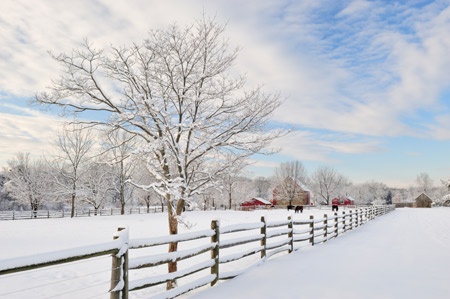Snow brings moisture to wheat crop in parts of U.S. plains
Category: Grains, Miscellaneous, Oilseeds
 (Southwest Farm Press) – Record breaking snowfall in parts of the U.S. plains in the past two weeks delivered some relief from the worst drought there in more than 50 years.
(Southwest Farm Press) – Record breaking snowfall in parts of the U.S. plains in the past two weeks delivered some relief from the worst drought there in more than 50 years.
While hard red winter (HRW) crop conditions and soil moisture levels certainly improved, the precipitation was not nearly enough to reverse months of severe drought conditions.
The big, late-season winter storms had an immediate effect on wheat crop condition ratings.
In Oklahoma, the percentage of the crop rated as good or excellent increased from 9 percent to 16 percent and the percentage of the Oklahoma crop rated as poor or very poor fell from 54 percent to 47 percent in just two weeks.
Kansas’ crop ratings at the end of January were the worst of the 2012/13 marketing year. After the large snowfall at the end of February, the percentage of the crop there rated as good or excellent increased to 24 percent, while the percentage rated poor or very poor decreased to 35 percent.
Texas also saw a four point swing in crop ratings with the good to excellent percentage improving to 18 percent and poor and very poor falling to 45 percent.
The precipitation also helped improve drought ratings in some areas. The latest U.S. Drought Monitor shows a big improvement in Oklahoma, the Texas panhandle and south-central Kansas. Yet, the moisture was only enough to downgrade the drought classification in those areas from exceptional to extreme, meaning significantly more precipitation is needed to return to average soil moisture levels.
Low subsoil moisture remains an area of concern for wheat farmers. Almost three years of below normal precipitation in the southern U.S. plains has severely depleted moisture reserved in the deep soil.
Not enough rain or snow has fallen recently to replenish the subsoil moisture. For example, even the 12 to 24 inches of snow in parts of Oklahoma, which greatly improved topsoil moisture ratings, likely will not improve subsoil levels alone.
The percentage of topsoil rated short or very short fell from 55 percent the prior week to 35 percent this week. But the percentage of subsoil rated short or very short remains at 88 percent, just 1 percent better than last week and at a very concerning level.
Kansas Wheat CEO Justin Gilpin expertly summed up the impact of the recent precipitation. While he was very happy to see it, he said the rain and snow “was enough to buy this wheat crop 30 more days.”




